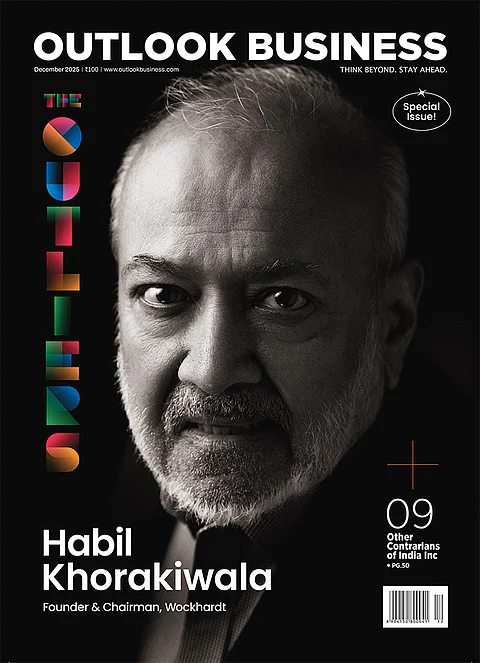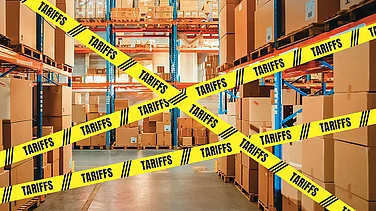
Former RBI Governor Raghuram Rajan warns that the proposed US HIRE Act, which taxes outsourced services, poses a bigger risk to India’s economy than the H-1B visa fee hike.
With services forming 55% of India’s GVA and a September PMI slowdown to 60.9, the HIRE Act could severely disrupt India’s IT and digital exports.
Strengthening Global Capability Centres (GCCs), accelerating upskilling, and diversifying into Europe, Japan, and West Asia can cushion India against US policy shocks.
India’s $250-billion services export sector is increasingly losing its steam as the economy’s key driver after a slowdown in overseas demand and as markets and investors remain rattled. This was reflected in the Services PMI’s dip to 60.9 in September. The slowdown indicates how India stands at a vulnerable chokepoint—its export engine on the verge of losing momentum as a key driver of resilience amid global headwinds.
However, if deals aren’t sealed and policies aren’t reshaped, another great pull from the Atlantic is awaiting Indian exporters and workers. The US Congress is debating a proposed US Halting International Relocation of Employment (HIRE) Act, which seeks to tax the very act of outsourcing—a move that former Reserve Bank of India Governor Raghuram Rajan warns could hit India far harder than the H-1B visa fee hike.
“One of our biggest concerns is not so much the goods tariffs but whether they try and find ways of imposing tariffs on services. This is a threat,” Rajan said, cautioning that the legislation could extend tariffs beyond goods to include India’s IT and digital services.
India is one of the major countries whose economy is heavily dependent on services exports. In 2024–25, the services sector contributed nearly 55% of Gross Value Added (GVA) and encompasses high-value and highly skilled services such as IT, financial services, real estate, and professional services. The post-pandemic recovery of the domestic economy is heavily attributed to the services sector led by IT, finance, and professional services. This highlights the significance of India as a major hub for service exports.
Taxed at the Source – HIRE Bill vs H-1B Visa Fee Hike
While the H-1B visa fee hike disrupts an on-site professional’s stability and mobility, its impact is limited, unlike the HIRE Bill, according to Rajan. He highlighted that the demand for H-1B visas has already declined as more services are being delivered digitally from India.
“Companies like Microsoft that hire on an H-1B basis may now hire more people directly in India through their Global Capability Centres,” Rajan noted. “There will be adjustments, and the net effect will be less H-1B immigration, but it doesn’t look as bad as it first seemed. The HIRE Act is much more important for us.”
What Is the HIRE Bill?
Senator Bernie Moreno introduced the HIRE Act 2025 with an objective to discourage outsourcing by American companies and prevent them from seeking cheap labour overseas. The bill aims to tax even the “outsourcing” nature of work if the end consumer of the services is a US citizen.
The HIRE Act introduces a 25% tax on outsourcing payments made by American companies to foreign individuals—in a move ensuring the benefits of this work aid US consumers. Moreover, American companies will not be permitted to claim tax deductions related to these outsourcing payments.
If the bill is passed, the amendments will apply to payments made after December 31, 2025. The revenue generated from these taxes will then be directed toward funding upskilling, apprenticeships, and workforce development programmes for US citizens.
“How that’ll be implemented is anybody’s question, but this creeping of tariffs beyond goods to services to Indian visitors into the US through the H-1B route—these are all concerns,” Rajan said in an interview with DeKoder.
How Will the Act Impact India?
The US accounts for 70% of India’s IT export revenue, and Rajan highlighted that India already faces an aggressively higher tariff of 50%, even more than China’s 47%, which is already crippling major labour-intensive export sectors.
Industry experts say IT services companies are already relooking at their models, adapting to more offshore work, and utilising automation and digital delivery. “The demand for Indian talent is not going away completely,” Neeti Sharma, chief executive officer at TeamLease Digital, a staffing solutions company, said. “In fact, over time, these policies may push India further toward high-value, remote-delivery services, making our export sector stronger and less dependent on the physical movement of talent.”
According to experts cited by The Hindu, the IT services workforce impact could range between 30–60%, consisting of around 2.5 million people.
Global Capability Centres – A Backbone to Indian Export Services
While the HIRE Bill, if passed, will significantly impact outsourcing of skilled services, Global Capability Centres (GCCs) can be the saviour for India’s services export crisis. Unlike outsourced services, GCCs are in-house capacity centres of multinational companies, which fall outside the tax bracket of the proposed HIRE Act.
A NASSCOM research report last month showed that India’s market size in GCCs is likely to grow to $99–105 billion in another five years. GCCs have grown significantly and are expected to expand exponentially as their daily operations, finance, and research and development functions encourage companies to set up centres. The report estimates the number of companies with GCCs in India to grow to around 2,100–2,200 by 2030, employing 2.5–2.8 million people.
Amid ongoing trade negotiations, tariff uncertainties, and rising worries about US trade policy implications on the Indian economy, tapping alternative markets and revamping GCCs in India will help mitigate a massive fallout of India’s biggest market strength—its skilled labour services.
Pivot From the US: What the Industry Needs
Both Rajan and Sharma have emphasised the need to actively push for India–US trade negotiations to ensure the HIRE Act will not disrupt Indian service providers. “Locally, the focus should be on supporting exporters through better incentives, easier access to credit, and large-scale digital upskilling programmes,” Sharma said.
Rajan also concluded his interview by urging policymakers to closely monitor developments in major markets and look for opportunities to tap alternate partners for strengthening India’s export sector. “India needs to stay alert to policy shifts in major markets,” he said. “The HIRE Act could affect not just trade in goods but also the country’s growing digital and services exports.”
On a brighter note, even though the US is our biggest export market, it is not the only one. Europe, Japan, West Asia, and Southeast Asia are increasingly providing India with greater market access. Europe, especially with the advancement of the EU–India Free Trade Agreement (FTA), is seeing high demand for digital transformation.
Sharma noted that Japan is focusing on engineering and R&D partnerships, while West Asia is investing in fintech and public-sector tech services. However, challenges linked to complex regulations, data protection laws, and language barriers remain a key area for improvement. “Still, with the global push toward AI and digital solutions, India is well-placed to grow across these markets and create a more balanced export base,” Sharma said.




























